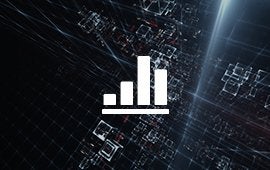Collect on the Debt
Recover More Time
Collections and Recovery Solutions for Those Who Demand More
The collections landscape continues to change. In today’s ever-fluctuating economy, both the number of accounts going to collections and the amount of debt entering recovery are increasing. At the same time, people change addresses, phone numbers and employers more frequently than at any other time in history, making the art of collecting payment increasingly complex.
Collections and recovery departments struggle to keep up as they pursue clients for money they owe, especially if they lack the right tools to be effective. It’s no easy task to locate clients and their assets–especially when clients are actively employing ways to hide. Outdated systems, processes and data lead to wasted time and resources for debt collection, as well as worker frustration that can result in high turnover rates.

Locating People and Assets
Some of the current collections and recovery tools that banks are using may create more drag than lift. You can spend vast resources of time with little to show for it in the way of recovered debt. LexisNexis Risk Solutions can help.
Our collections and recovery solutions help you identify more right-party contacts and drive increased workflow efficiencies and profitability at every stage in the debt collection process. The right debt recovery tools can greatly increase your financial return. They enable you to segment debts, prioritize accounts for payment collection and concentrate your efforts and resources where you’ll have the most success, all without using any unfair practices.

Have Sales Contact Me
Our solutions are based on proven debt collections strategies. They take into account important factors like first-party contactability and even factor in a consumer’s propensity to pay at each step of the collections process. You can follow distinct collections decisioning workflows powered by Fair Credit Reporting Act (FCRA) compliant data to ensure you’re working in full compliance with the law and using the right information for permissible purposes.
You can reach out to customers with past-due accounts early and utilizing multiple channels—emails, phone calls, text messages, letters, door-knocking—to increase debt collections. And instead of sifting through mountains of data from multiple sources, you can access reliable and relevant data through various delivery channels including online, batch or XML. Then, get quickly to work on making contact with delinquent accounts. It’s all about maximizing recovery of bad debt without expending unnecessary resources while following compliance policies and the law.
Solutions for Every Stage of the Collections Workflow

By leveraging the power of data and advanced analytics, LexisNexis collections and recovery solutions transcend the limits of your in-house resources to build an efficient environment from end-to-end of your collections workflow including:
- Data hygiene – Access up-to-date, accurate information on pertinent factors for debt assessment and collection, such as bankruptcies, deceased/living, incarcerations, military, contact risk and more.
- Scoring and analytics – Go beyond credit reports to gain insights that allow you to segment accounts. Prioritize and allocate resources regarding which consumers to pursue first based on who is more likely to pay, which accounts are more urgent, best way to collect from them, etc.
- Contact and locate – Ensure you have accurate, current and complete data for skip tracing and contacting consumers including phone numbers, addresses, email, employers, relatives, associates and more. Use this information and the multiple avenues it provides to contact consumers for collections and connect with them before other debt collectors do.
- Mitigate and litigate – Leverage data and analytics to locate people at their place of employment and verify property and bank account data. Decide when to take legal action and file suit against a delinquent consumer through methods of collecting post-judgments.
Accessing new types of data can give you a broader picture of who you’re attempting to collect from. That information helps you to understand consumers’ situations better and potentially tailor the customer experience accordingly.
Overcome Three Distinct Challenges
1. Disparate data between systems
Many banks and credit unions use at least two separate systems to conduct business, one for banking and one for collections. Other platforms may be employed to supplement data and help make decisions. Some banks even have different platforms for each product line (ex. ending, credit cards, mortgages, vehicles).
These systems seldom have the capabilities to communicate information back and forth, which can cause disparate information between these systems regarding the same consumer. Which information is current and accurate? This problem is only intensified by the different roles within these institutions – tellers and collectors are part of two completely different departments so the information in one system could be up-to-date because of a recent transaction while data in the other system remains outdated.

2. System inefficiencies
Using more than one system for collections is time-consuming. Collectors have to manually compare information from one system to another to determine what data is accurate and current if there’s a dispute.
Collectors often find they need to use multiple resources to supplement the in-house data provided by management. It can be the only way to gather the most complete, up-to-date information on consumers. But visiting these different resources (log in, perform the search, compare data) takes time.
Some collection departments use antiquated, in-house built systems. They’re slow and have inconsistencies. They contribute to inefficiencies with analytics and are slow to deliver the necessary information.

3. Lack of built-in analytics
Some collection systems lack features to score and analyze accounts. Without these analytics, collectors can’t determine a consumer’s willingness and ability to pay, which hinders prioritization. The collector ends up wasting time on consumers who may never pay up, instead of focusing on those that constitute low-hanging fruit. These inadequate systems tend to be found more often in smaller banks and credit unions.
LexisNexis Risk Solutions resolves these challenges and ultimately increases cash flow by providing a single system for both collections and banking that incorporates and updates their data in real-time and offers real time scoring and analytics.
Discover how our collections and recovery solutions streamline collection efforts and increase returns.
Skip Tracing
Debt Recovery Assessment
Collections Compliance
Get more from your collections and recovery solutions, with LexisNexis® Risk Solutions
We believe in the power of data and analytics
to manage risk & uncover opportunity.
Products You May Be Interested In
-
Account Monitoring
Receive automated alerts on key client information
Learn More -
Accurint® for Collections - Contact and Locate Workflow
Streamline skip trace efforts with access to more right-party contacts
Learn More -
Accurint® for Collections Decisioning Workflow
Prioritize collection strategies with streamlined access to FCRA-regulated data sets
Learn More -
Banko® Events Monitoring
Accelerate bankruptcy case management with automated updates of key events
Learn More -
Banko® Solutions
Discover, monitor, and manage changes in bankruptcy case information
Learn More -
Business Data Enrichment Suite
Optimize customer data to identify opportunities and avoid risk
Learn More -
Email Search
Confirm the connection between an email address and an identity to maintain communications compliance
Learn More -
LexisNexis ® RiskView™ Credit Solutions
Improve consumer credit risk assessment with LexisNexis RiskView Credit Solutions
Learn More -
Payment Score
Accelerate collections results with alternative data
Learn More -
PAYMETRIX AD®
Identifying and prioritizing legal collection decisions
Learn More -
PAYMETRIX AI®
Identify previously undiscovered consumer assets
Learn More -
Phone Confidence Indicator
Cleanses phone data with a fast, easy, automated process
Learn More -
Phone Disconnect Verify
Confirms phone numbers that have been reported as disconnected
Learn More -
Portfolio Evaluation Report for Collections
LexisNexis® Portfolio Evaluation Report gives increased visibility into portfolio quality and value
Learn More -
RiskView Attributes
Enhance risk modeling performance across the credit spectrum
Learn More



